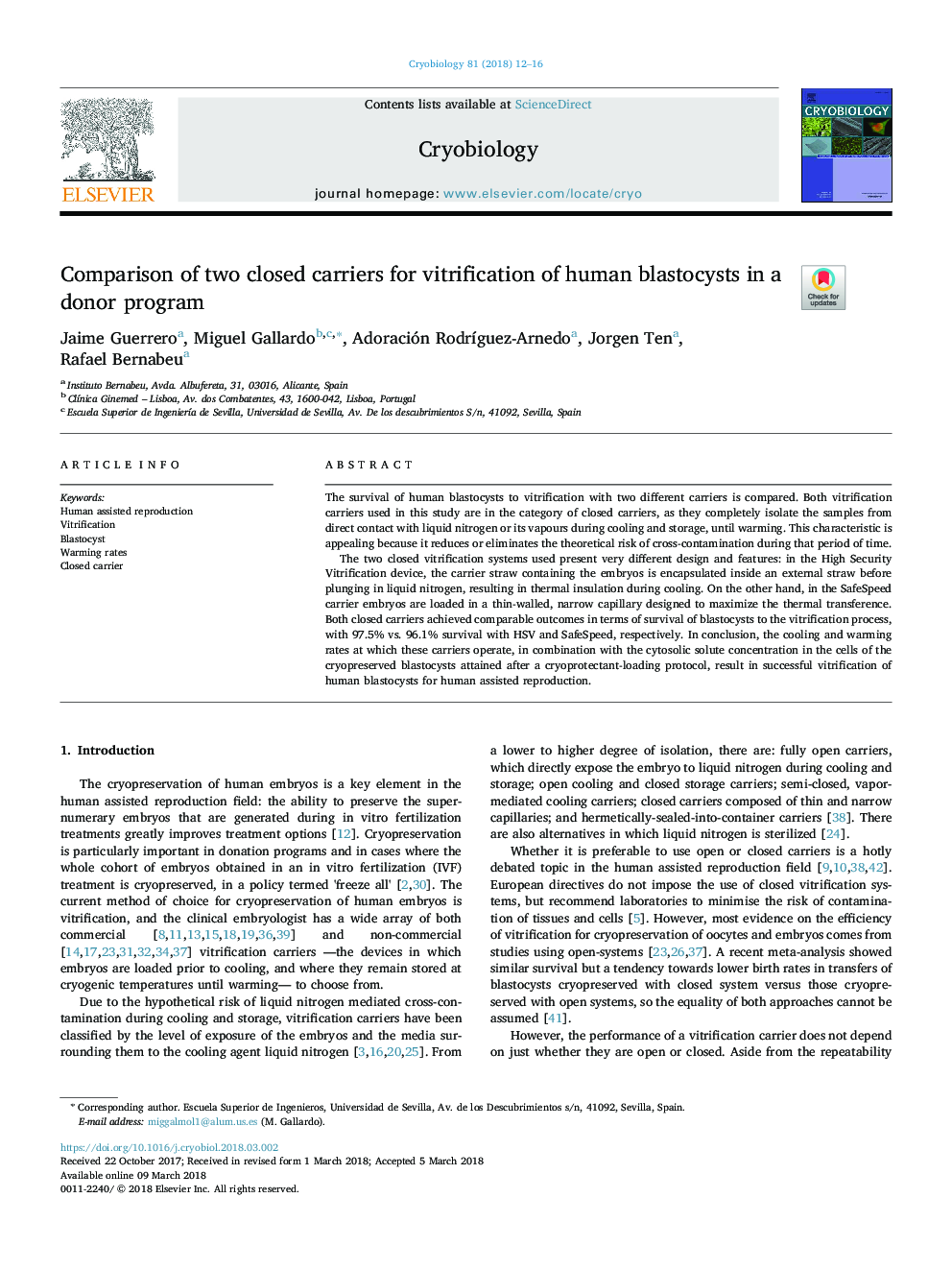| Article ID | Journal | Published Year | Pages | File Type |
|---|---|---|---|---|
| 8464121 | Cryobiology | 2018 | 5 Pages |
Abstract
The two closed vitrification systems used present very different design and features: in the High Security Vitrification device, the carrier straw containing the embryos is encapsulated inside an external straw before plunging in liquid nitrogen, resulting in thermal insulation during cooling. On the other hand, in the SafeSpeed carrier embryos are loaded in a thin-walled, narrow capillary designed to maximize the thermal transference. Both closed carriers achieved comparable outcomes in terms of survival of blastocysts to the vitrification process, with 97.5% vs. 96.1% survival with HSV and SafeSpeed, respectively. In conclusion, the cooling and warming rates at which these carriers operate, in combination with the cytosolic solute concentration in the cells of the cryopreserved blastocysts attained after a cryoprotectant-loading protocol, result in successful vitrification of human blastocysts for human assisted reproduction.
Keywords
Related Topics
Life Sciences
Agricultural and Biological Sciences
Agricultural and Biological Sciences (General)
Authors
Jaime Guerrero, Miguel Gallardo, Adoración RodrÃguez-Arnedo, Jorgen Ten, Rafael Bernabeu,
